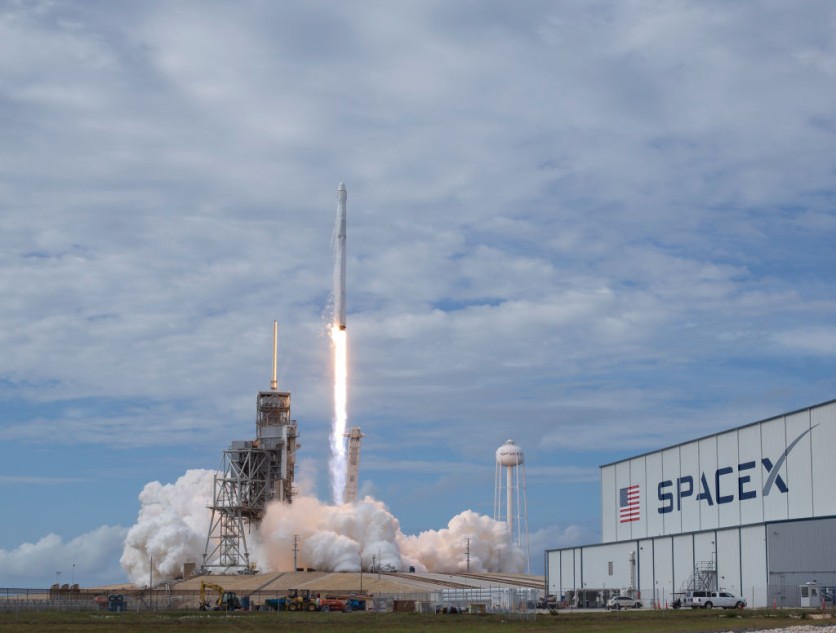
SpaceX Dragon, the company's resupply spacecraft en route to the International Space Station, was spotted flying into orbital on June 5.
With a video, the National Aeronautics and Space Administration or NASA posted on its official Twitter account that the SpaceX cargo Dragon is flying into orbital on the morning of June 5 as it continues to approach the Space Station for docking.
SpaceX Dragon Nears Docking
The spacecraft carried the 7,300-pound shipment, which also includes onions, avocados, cherry tomatoes, and fresh lemons, for the seven astronauts in the station. It is estimated that it will arrive in the morning on June 5.
According to NASA's statement, the spacecraft was launched on a Falcon 9 rocket from Launch Pad 39A at Kennedy in Florida. It is scheduled to dock at the space station at 5 A.M. on June 5, and remain at the station for a month.
Coverage of the arrival will start at 3:30 A.M. Eastern Standard time on NASA Television, the space agency's official website, and the NASA app.
This 22nd contracted resupply mission for SpaceX will deliver the new ISS Roll-out Solar Arrays or iROSA to the space station in the trunk of the Dragon spacecraft.
After the SpaceX Dragon docks to the space station's Harmony module, the robotic Canadarm2 will extract the arrays, and astronauts will install them during spacewalks that are planned for June 16 to 20, according to NDTV.
What is Inside the Cargo?
Aside from food and other supplies, some of the science experiments headed to the International Space Station include a portable ultrasound, a solar array, tardigrades, and baby squid.
The solar panels are being sent to the ISS to boost the amount of energy available for research. The iROSA is made up of small panels that roll thanks to the previously exhibited technology at the station.
The first pair of six new rigid panels will be installed this summer by the Expedition 65 crew to supplement the station's existing rigid panels, according to First Post.
Water bears will also be a part of the science experiment at the space station. The water bears, also called tardigrade, are small critters commonly found in water and look like a combination of bears and single-eyed aliens.
Tardigrades are one millimeter in size and are almost indestructible. Because of their size, the tardigrade can only be viewed under a microscope, and 5,000 of them are making their way to the space station.
The tardigrade can survive in almost any extreme environment and are a model organism for studying biological survival under extreme conditions on Earth and in space. Researchers will try to identify which gene allows tardigrades to adapt and survive in high-stress environments in space.
Also making their way to the ISS are 128 glow-in-the-dark baby squid who will try to help researchers understand the symbiotic relations between microbes and their animal hosts.
Microbes are important for developing tissues and maintaining human health. They are also hoping to find out if space flight affects this relationship to find ways to preserve astronaut health on long-term space missions.
Related Article : SpaceX Crew Astronauts Describe Challenges Aboard Dragon Capsule's Return to Earth After More Than 160 Days in Space
This article is owned by Tech Times
Written by Sophie Webster
ⓒ 2025 TECHTIMES.com All rights reserved. Do not reproduce without permission.




